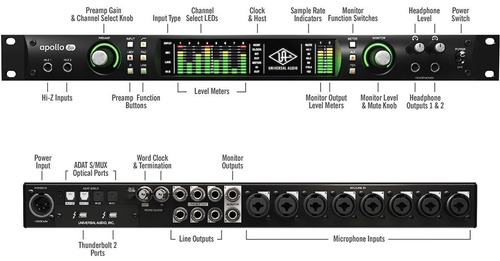
Unlike the Twin, which debuted without the ability to serve as a monitor controller for other Apollo units - it can do it now, but was a feature many were expecting at launch - it seems as though Universal Audio has covered every angle prior to the 8p’s release. The 8p has plenty of grunt for processing UAD’s suite of plug-ins with a Quad Core DSP inside. The Apollo 8p is designed specifically for Unison die-hards, considering you’d probably go for a classic Apollo 8 if you had some external mic preamps you were intent on using. There was never a time I didn’t want to add a Unison flavour, and they always stacked well. All of the emulations added some harmonics that helped get the sound off the couch and coming forward out of the speakers a bit more. The onboard preamps are very usable, but flicking on any of the emulations instantly adds some extra presence. Rather than just adding harmonics, it’s like you’re interacting with the hardware. But more than just an addition down the insert chain, Unison preamp emulations - Neve 1073, API Vision Channel Strip, etc - when applied in UAD’s Console 2.0 application, take over the gain staging of the preamp. If you’re unfamiliar with Unison technology, UAD has basically taken a vanilla IC preamp and used its own modelling technology to juice up the harmonics. The 8p has eight channels of conversion, and eight Unison preamps to go along with them. The Apollo 8p is the middle child of the second- generation ‘blackface’ Apollos - there’s also the standard four-preamp, eight analogue-in Apollo 8, and the preamp-less, 16-channel Apollo 16 converter. My last outing was with the Apollo Twin, a handy introduction to the Apollo range, but I’ve been eager to try the system again with a few more inputs.

This now the third time we’ve reviewed a UAD Apollo unit, and the second time for me.


 0 kommentar(er)
0 kommentar(er)
